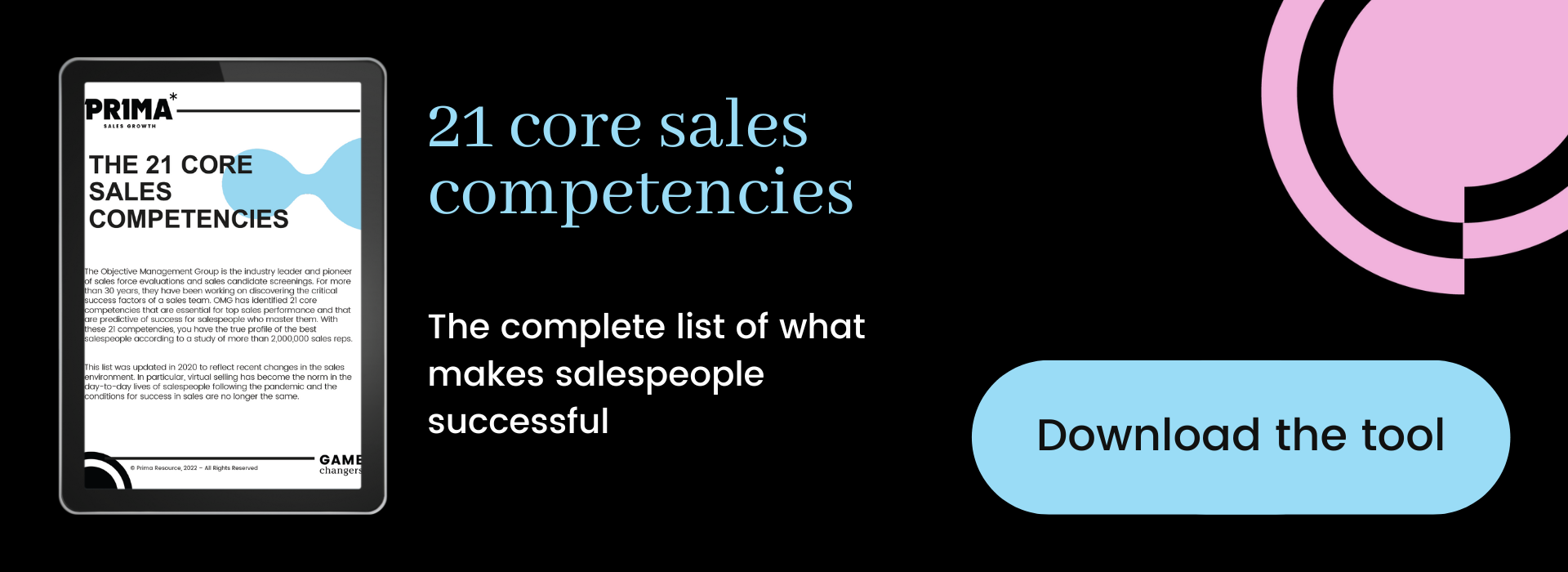
Motivation is one of the 21 competencies that make a good salesperson.
In his article Motivation is the “what” that fuels a sales representative, Dave Kurlan explains how every sales representative is different.
“Everyone is motivated by different things and for those who are clearly motivated by money, and when you have a clear goal and focus for them, their compensation should and must be commission-based. When you have people who are motivated more by recognition, awards, competition, time-off, public service, or philanthropy, your compensation program should be flexible enough to compensate them in an appropriate manner too.”
Still according to Dave Kurlan,
“Desire and Motivation are part of a triad of sorts, with the third, and most important piece being Commitment to achieve greater success in sales.”
Relationship Between Motivation, Commitment, and Desire
Motivation is an element of a sales rep’s will to sell. One of the trickiest relationships to understand is low motivation paired with high desire and commitment, two other elements of the will to sell.
Once you’ve studied motivation in greater detail, you quickly understand that you cannot motivate other people, motivation must actually come from within. Motivation must originate from the person affected by it, and this is when desire and commitment step in.
How do you explain a person who wants to become the best, who’s willing to do whatever it takes to get to the top, but who also has low motivation? It’s hard to wrap your mind around it, but it’s possible. When these results come up in an evaluation, it’s not the evaluation that is incorrect, there are actually a couple of explanations for this.
When you get low motivation results, you must first figure out if there’s a desire or commitment issue. When CEOs try to motivate complacent salespeople by modifying their compensation plan, it usually doesn’t produce any results. Money isn’t always the solution. The problem is they don’t have an incentive, which is created by desire and commitment. Low motivation does not translate to low inner motivation. Helpful motivation, at its core, is how impactful outer motivation is with this individual.
High inner motivation is not a safeguard against bad days and slumps. In these moments, managers must step in and provide outer motivation. High motivation results from outer motivation having affected a salesperson’s performance.
When there actually is low inner motivation, it means you have a relatively shorter leverage for motivation. In these cases, as a manager, you won’t impact your salesperson’s motivation and performance even if you provide outside motivation.
This is a hidden risk for your organization, because the day this person becomes unmotivated, there isn’t anything you can do about it, since external motivation doesn’t encourage them. They must find their own way out of their slump.
To better understand, take for example salespeople who are financially independent. They’re wired to win and to be top performers, but given that financially, they don’t need to work, material or positive encouragement is ineffective.
What type of motivation will create a response?
Motivation can be either altruistic, extrinsic, or intrinsic.
There’s a difference between intrinsic motivation and extrinsic motivation, and managers can only affect the latter. They cannot create inner (intrinsic) motivation, as this must come from the salesperson. Here are the detailed types of motivation:
Altruistic
This type of motivation has recently been observed and published by Objective Management Group (OMG). These salespeople are motivated to serve others, much to their own detriment. This behaviour is difficult to modify and understandingly, these people can’t perform well in sales. Unfortunately, you’ve a better chance of fitting a square peg into a round hole than finding ways to motivate these people.
Extrinsic
Salespeople of this type are motivated by competition, money, reward, and material things. They’re more effective in a shorter and/or more heavily commissioned sales cycle.
Intrinsic
Conclusion
Two factors must be looked at when evaluating your salespeople’s motivation. First, can they be influenced by motivation? Second, what type of motivation methods do they respond to?
We know now as a society that you should be mindful of every one of your children’s personalities when bringing them up. The same holds true in regards to respecting every one of your salespeople’s individual character, weaknesses, and response capacity. At the end of the day, you and your team will have created a much more positive environment, conducive to superior performances!
The 21 core sales competencies evaluation was established so leaders in the sales industry could adopt proactive, individualized training methods. Understanding what drives your salespeople is definitely a first step to a more personalized coaching.






